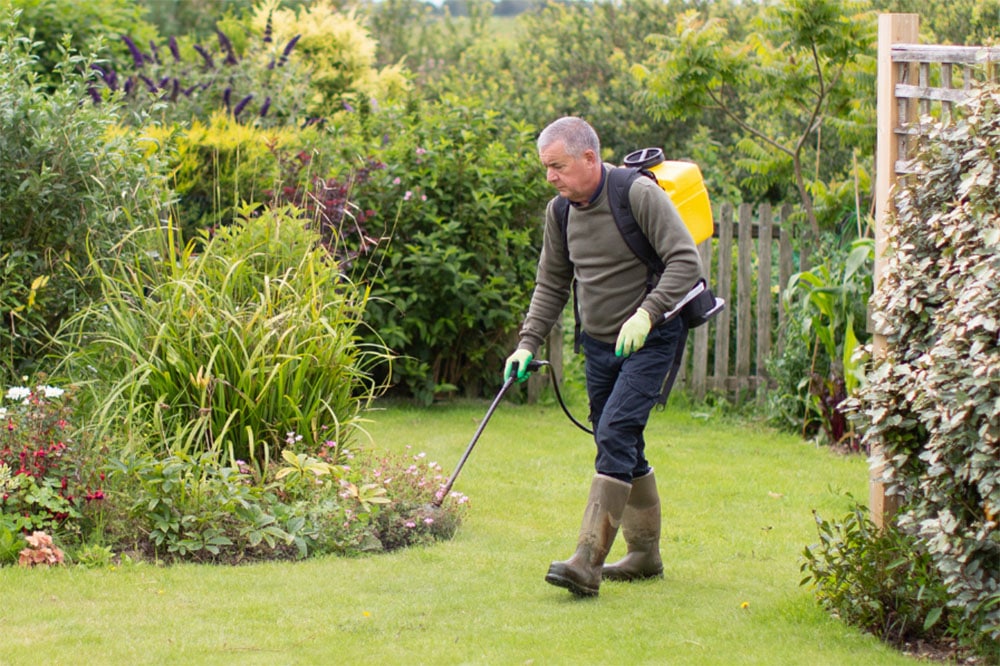Regardless of whether you’re the proud owner of a pristine green lawn, or you take great pride in your backyard, nothing can feel more frustrating and disheartening than discovering unwanted plants (such as clover and crabgrass) taking center stage in the garden.
Weed growth doesn’t only look unappealing, but it can also have a negative effect on the growth of your lawn, and can actually prevent grass from growing. As a result, this can lead to a deterioration in the quality of your garden – and no one wants that!
While grassy and noxious types of weed can steal much-needed nutrients from the soil and hog the sunlight, sometimes plucking out weeds by hand isn’t the best course of action, and this is where chemical weed killers come into the mix.
If you’re interested in trying out a chemical weed killer, you might currently be wondering how to effectively use one without causing your grass to become damaged. Below, we’re going to be talking you through how weak willers work, in order to settle any doubts you may have about using one.
What Are Weeds?
As we’re sure you can already guess, a weed is a type of plant that grows where it is not wanted! While there are some kinds of weeds that are relatively easy to get rid of, there are some types of weeds that can threaten your existing greenery and spread like wildfire.
For this reason, it’s very important to make sure that you get rid of weeds as soon as you spot them, and using a weed killer is one of the best ways to prevent damage to your lawn, while also helping to prevent weeds from re-growing.
How Do Weed Killers Work Without Damaging Grass?
Even though the most common method of removing weeds is usually via hand extraction, sometimes you need something a little more powerful and fast-acting, especially if the situation has gotten out of hand.
Weeds can be notoriously difficult to control and get rid of, and traditional methods of removing weeds can sometimes be ineffective at preventing any re-growth, which is where weed killers come into play.
Designed to offer a powerful and long-lasting solution to stubborn weeds that just won’t stay away, weed killers are specifically designed to target a variety of common garden weeds with a permanent effect.
What’s more, when used correctly, weed killers will only target the weeds that need to be extracted but will do so without causing damage to your surrounding lawn.
Here are some types of popular weed killers, and how they work without damaging your surrounding grass:
Selective Weed Killers
Just like the name suggests, selective weed killers are a type of weed killer specifically designed to target particular plant species, which means that you will be able to freely use selective weed killers on your lawn without fear of your existing grass becoming damaged.
Non Selective Chemical Weed Killers
While nonselective chemicals can be used without causing damage to your lawn, using these types of weed killers do have the potential of causing damage to your grass.
The main reason for this is simply due to the fact these weed killers are not created to target a specific weed(s) which means that you will need to use it carefully to avoid damage to your grass.
Systemic Weed Killers
Systemic weed killers are some of the most powerful types of weed killers on the market and will be able to travel through the internal system of the weeds you are wanting to get rid of, and travel right down into the roots to disrupt their growth and kill the weeds off.
Besides making sure that you have an understanding of the different types of weed killers available on the market, it’s also a good idea to understand how to correctly use them, as an incorrectly used weed killer can raise the chances of the surrounding grass becoming damaged.
First and foremost, prior to use you should make sure that you are taking the time to familiarize yourself with the instructions provided for you by the manufacturer.
Oftentimes, these will usually be located on the back of the bottle, although sometimes you may even find that your weed killer comes with a little instructions booklet.
Alongside this, you should also try your best to make sure that you are using the correct dose, as too much weed killer may cause your grass to become burned.
The time of year is also a great way to help lower the chances of your grass becoming damaged.
For most weed killers, their effectiveness rate is at its peak during times of the year in which weeds are most active, so making sure that you’re using your weed killer during these peak seasons will ensure that the chemical formula provides a more targeted action to the weeds, rather than the surrounding grass that you want to keep intact.
As a side note, we also recommend avoiding the use of a weed killer if it is not necessary to use one.
If you can quite easily extract all of the weeds by hand, then you should opt for this more traditional method (even though it can be a little more time-consuming) as it will mean that your grass will not be at risk of damage.
When Can Weed Killers Be Used?
The great thing about weed killers is that they are designed for use throughout the year, however, weed killers are specifically optimized for use on weeds in the spring and fall, as this is the time of the year in which weeds flourish and are at their strongest.
Moreso, it’s worth keeping in mind that most weed killers on the market utilize systemic and selective systems which actually require the weeds they are targeting to be at peak activity and thriving.


